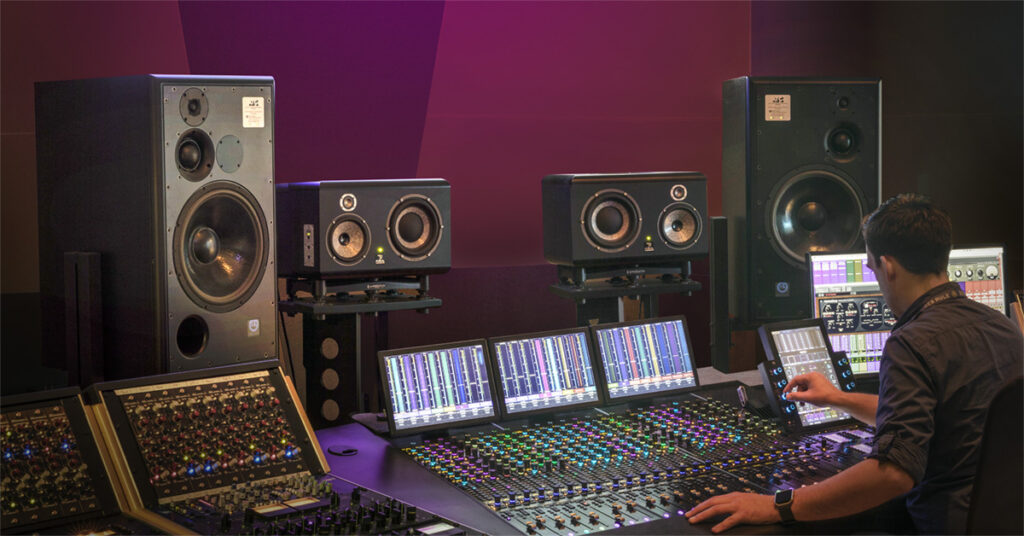Studio monitors are designed to have a flat frequency response with no obvious sound coloring; so the producer can accurately hear how the mix plays and what settings need to be adjusted to produce a balanced sound.
For example, with a Hi-Fi system, some frequencies are amplified to make the final product sound better or to improve the sound, but this is not what you want when producing music because you need to be able to listen to the music critically.
They provide flat frequency response. Sounding “flat” or having a flat frequency response makes music sound “better”, “sharper”, etc. It means that there is no particular frequency that is cut or amplified to make the sound; this is something you can find a lot today.
My Hi-Fi system does this too, and frankly it sounds much more interesting and appealing, but it’s not the best system for mixing as it doesn’t represent how different instruments actually sound for mixing.
Here Are 5 Reasons Why You Need Studio Monitors
Designed with sound quality in mind Since
Studio Monitors are primarily designed for music production, the sound quality should be better than what you would normally get with a Hi-Fi or PA system (we’re not saying they sound more interesting, just every little nuance comes through and can be heard).
This is similar to the concept we talked about earlier about studio monitors with flat frequency response, as the producer must be able to make the right decisions when mixing and mastering.
They provide audio crossover
This is an often overlooked aspect when comparing monitors to headphones because with headphones you can only listen to the right channel in one ear and the left channel in the other. In other words, you listen to each channel separately.
In speakers, although you mainly have to listen to the left speaker with the left ear and the right speaker with the right ear due to the position of the speakers, both ears will receive information from both speakers. This allows you to better adjust the panning for a better and more realistic stereo feel, as well as certain specific details. It can help you diagnose problems and is also a more realistic representation of how people listen to music, so you should mix it that way too.
They do not distort sound
One of the disadvantages of regular speakers is that they slightly distort the sound when they exceed a certain sound threshold, which is far from ideal for music production, mixing, and mastering.
Now, while studio monitors are certainly not designed to produce really high levels of music, again, as they are used to critically listen to music to gauge whether something needs to be tuned in, they can often be pushed to their limits without breaking down.
Enhanced dynamic range
Dynamic range is the difference between the softest and loudest signals a device can handle, so sound intensity (measured in dB) and speakers with a wider dynamic range will be able to more accurately reproduce louder and quieter sounds.
Better Build Quality
We don’t think this is one of the biggest advantages of studio monitors, they are usually a bit better built than general commercial speakers because they don’t always produce rendered music with relatively low dynamic range (the difference in the loudest and softest parts), which means they have to deal with very quiet audio signals that a loud volume boost can follow.
Over time this can do some damage to speakers not made for this purpose. But in fact, they’re more ready to reproduce music that hasn’t been remastered yet.
Generally speaking, studio monitors can be used with computers, phones, etc.








